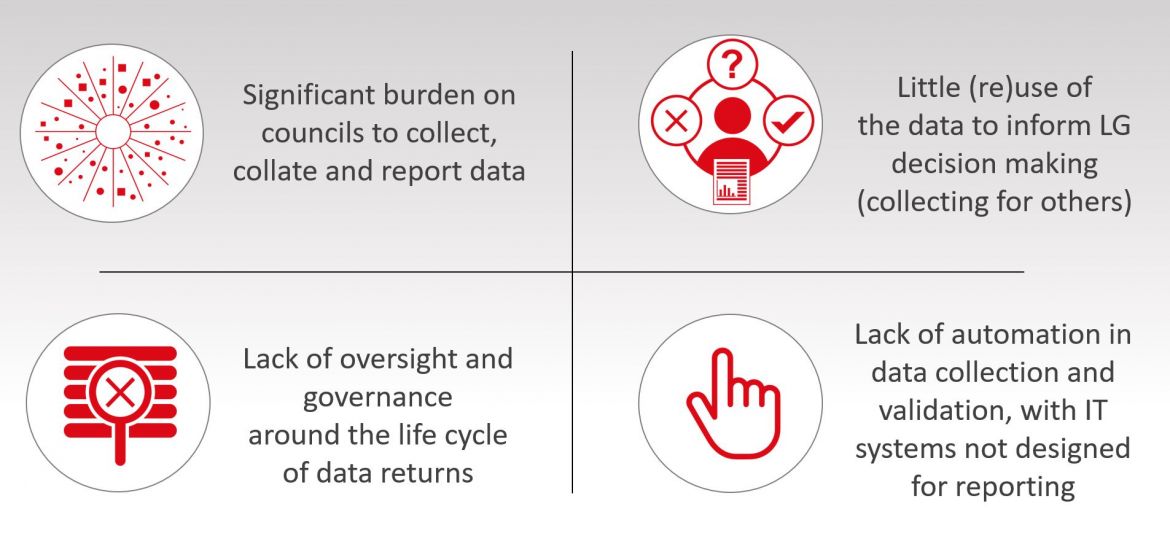Phase 1 was a discovery phase that aimed to identify recommendations to improve governance to manage the lifecycle of local government data returns. It was comprised of the following three workstreams:
- Mapping of data reporting requirements: a comprehensive mapping of current data returns, produced with assistance from Scottish Government, Public Health Scotland, COSLA and local government colleagues
- Analysis of current data flow and systems: a mapping analysis of the processes, systems and resourcing involved in servicing data returns, and how data is being used both locally and nationally.
- Stakeholder engagement: workshops, focus groups and online engagement with colleagues from local government, Scottish Government, professional associations and a range of other organisations and forums to prioritise where improvement activity should be focused within the reporting landscape and the governance arrangements required to support this.
Key findings from the discovery phase are summarised below.

Summary of key findings from the discovery phase:
- The volume of reporting that councils are required to provide is growing at an accelerated rate.
- The scale of reporting, alongside a lack of coordination and lack of automation in the return process creates a significant burden for local authorities.
- The volume is undermining our confidence in the quality of data returned, and also our ability to derive useful insights.
- An ever-greater local government resource is required to service reporting commitments, leaving less capacity to focus on what is important locally, and to undertake the value-added work of analysis, interpretation and use. In addition, the cost of producing this volume of data is unnecessarily high and will only keep growing.
- There is a lack of oversight or awareness of what data is being collected, or where there may be duplication, or opportunities for better alignment or linking of datasets.
- Lack of clarity and transparency in relation to the purpose and use of much of the data collected.
- Insufficient evidence of how the data is being used at a local and/or national level to drive improvement in outcomes or support a greater focus on prevention.
- Over-reliance on data collection approaches which do not support automated collection or validation of data, creating resource implications for both local government and Scottish Government, and significant time lags in publication.
- Councils’ systems and processes used to return data are often poorly orchestrated and co-ordinated, adding to the resource burden and undermining their ability to derive maximum value from available data.
Further detail is available in the Phase 1 Report and Summary of Findings and Recommendations.
Phone: 07747 711310
-
Phase 1 Final Report
The final report of the first (discovery) phase of the project.
-
The Crerar Review
Report of the independent review of regulation, audit, inspection and complaints handling of public services in Scotland.
-
The Verity House Agreement
Partnership agreement between the Convention of Scottish Local Authorities (COSLA) and the Scottish Government “setting out our vision for a more collaborative approach to delivering our shared priorities for the people of Scotland.”